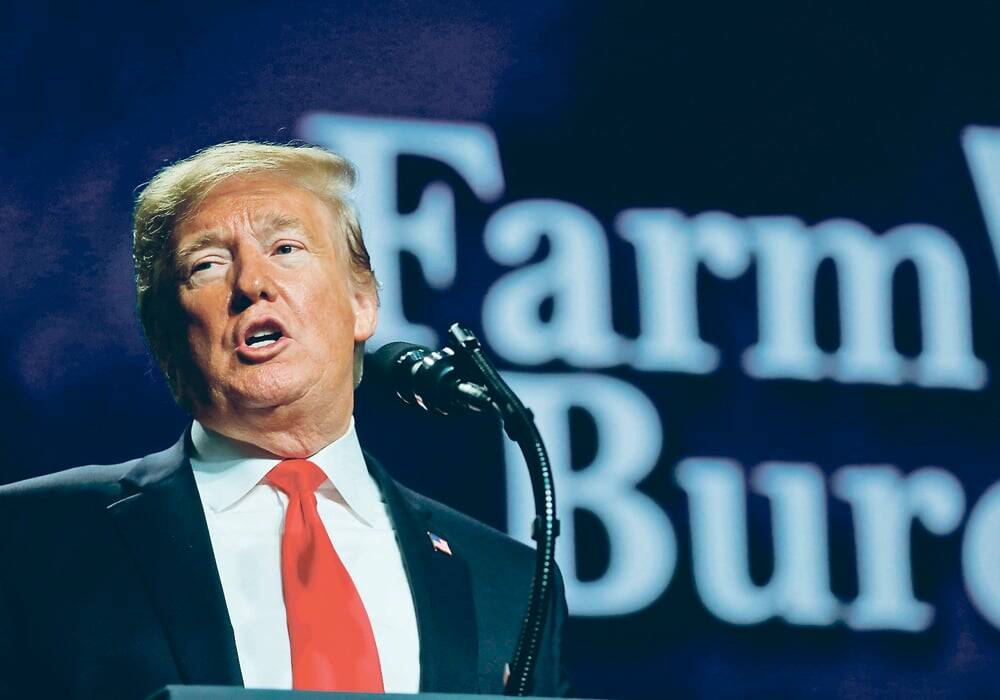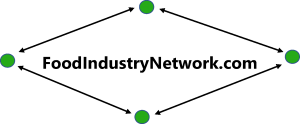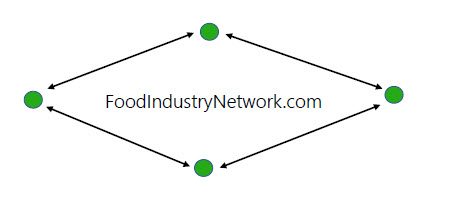A new era of trade policy

Election of Donald Trump as president of the United States for a second time signals a tumultuous and possibly perilous period in Canada-U.S. trade relations.
Read Also


OFA members call for proactive response to U.S. tariff threat
An Ontario Federation of Agriculture resolution asking for a proactive response to President-elect Donald Trump’s proposed 25 per cent tariff on Canadian goods received 99 per cent support during the OFA’s annual general meeting in Toronto Nov. 26.
Why it matters: A second Trump presidency likely means Canadian industries that rely on trade will face numerous challenges.
Canada’s agriculture sector will have to work much harder at persuading Americans that tariff-free trade with its northern neighbour is in their best interests. That was the consensus of panelists speaking during a Nov. 27 discussion hosted by the Canadian Agri-Food Policy Institute.
While some things can give Canadian farmers leverage, political upheaval and in-fighting at different government levels are making this country’s trade future more uncertain.
Just days before the panel discussion took place, Trump announced he would impose a 25 per cent tariff on all products imported from Canada. Jim Wiesemeyer, Washington bureau chief for American news outlet Pro Farmer, considers the announcement a “classic Trump” move designed to coerce. In this case, issues not necessarily related to agriculture, notably border security, spurred the announced tariff.
While baffling to some, Wiesemeyer said the move is another reminder of Trump’s well-documented negotiation and transactional methods. This is the reality Canadian agricultural stakeholders, or anyone involved in exports to the United States, must come to terms with.
“Get ready,” Wiesemeyer says. “I measured the first four years (of his presidency) in dog years.”
He says it’s also important for Canadians to recognize and account for those with whom the president-elect surrounds himself. His cabinet is staffed by loyal allies, comprising “a cohesive whole” on trade, and will seek to make American agriculture more competitive by, among other means, cutting regulations.
The direction of the country’s agriculture sector is unknown because the deputy and under secretary of the United States Department of Agriculture had not been identified at the time of this writing.
Carlo Dade, director of trade and infrastructure for Canada West Foundation, says it’s critical to realize what groups and political philosophies are driving trade policy in the United States.
Those focused on tax cuts, free trade and other forms of what was once considered a default position of Republicans, are still present in the American system, but the tariff-supporting populists behind the America First movement now hold a prominent place in government.
There will be push-and-pull between these groups, although a third critical factor – Trump himself – may be what matters more.
Dade says he sees policies “essentially being made by Donald Trump … It decreases the certainty because it’s not coming from a context where policy work is being done.”
If Trump does not take a particular interest in agriculture, however, Dade expects policy to be informed at least in part by Project 2025, a sweeping political vision published and promoted by right-wing think-tank The Heritage Foundation.
Getting our house in order
Meredith Lilly, professor and Simon Reisman Chair in international economic policy at Carleton University, echoed the other panelists by saying Canadians should not be surprised by tariffs announced via social media, a medium commonly employed by Trump.
Canada has aligned with the United States in its position on the import of Chinese goods, for example, so both countries can expect further trade retaliations from Beijing. Lack of enforcement in dairy tariff rate quotas, which allow other countries access to a portion of Canada’s dairy market at a reduced rate, mean supply management is likely to be a trade issue once more. Country of origin labeling could also rear its head again.
Regardless of the issue, Lilly emphasizes the need to redouble efforts at building relationships with stakeholders in United States agriculture. Doing so increases opportunities to communicate how tariffs destabilize agricultural trade, and how they will drive up costs for American farmers, such as the price of much-needed Canadian potash.
Supply chain disruptions are likely to be exacerbated by tariffs as well, says Meagan Murdoch, vice-president and national sector lead for communications firm Hill & Knowlton. Cross-border investment will be more challenging as investors are forced to weigh the additional cost of doing business across tariff lines.
Quoting past federal industry minister James Moore, Murdoch says Canada needs to respond rather than react to Trump administration policies. Unfortunately, developing measured responses is likely to be more challenging in the near term, given politicking between provinces, the provinces and the federal government, and the fact that a federal election is near.
Dade expresses a similar sentiment.
“We’re making Donald Trump’s job easier for him. His favourite negotiating tactic is divide and conquer. That’s what he’s trying to do with us and Mexico, and that’s what he’s trying to do internally – and we’re falling into it,” he says.
“Our indulgence of our political divisions are putting Canada at the centre of the universe, and expecting everyone else to agree to our reality, and to accept it and make exceptions for us, is really going to bite us.”
Reasons for optimism
Significant tariffs on Canada’s agricultural output would be damaging, but Wiesemeyer thinks Canadian farmers and agribusiness have some things working in their favour.
He does not think products critical to American farmers, such as potash, will come under fire from the Trump administration because of the inflationary effects it would bring, although he does say American farmers are “holding their breath” right now.
The Trudeau government’s decision to scrutinize Chinese investments at home and abroad will ring positive, as would showing that Canada can take action on other issues of import — border security and spending two per cent of GDP on the military, for example.
These and other things will matter in the transactional approach characteristic of Trump.
The U.S. government will also have to keep in mind what tariffs would do to the Canadian-American dollar ratio. Wiesemeyer says the higher-valued greenback is already affecting the U.S. trade deficit now sitting at US$45.5 billion.
Lilly reiterates the value of connection — having the right people in the right places to help Canadian perspectives percolate to Trump and his administration — and the need for Canada to be more proactive in enforcing existing agreements.
Dade says Canada and its industries would be much better off to take a united approach to trade negotiations. Fundamentally, however, he believes the populist and protectionist worldview held by many Americans and their representatives is going to be a major challenge.
“’We are your largest trade partner’ is not a phrase you want to deliver to people who think trade is the root of all evil,” says Dade.
Source: Farmtario.com

